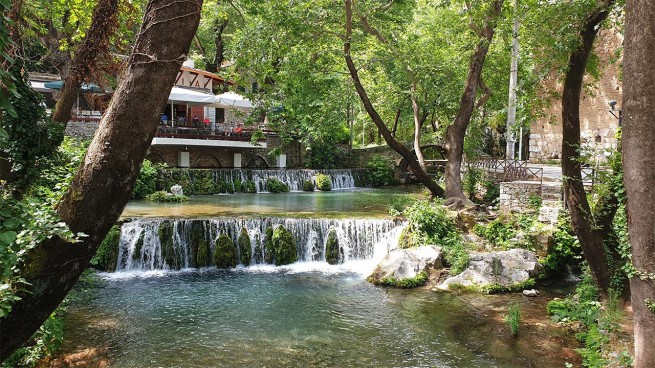Where are the stolen and then found paintings of Picasso and Montrian located to this day, and also why they have not yet been exhibited in the National Gallery – such questions are asked by the public, since they want to enjoy two of the most famous works of great artists.
Pablo Picasso’s “Woman’s Head” and Pita Montrian’s “Windmill in Stammer” were spotted by Greek law enforcement this year, but have so far never made it to the National Gallery.
Six months after they were found in a cache set in the rocks, the stolen canvases of the great masters – Picasso and Monrian – are in the hands of experts, who were handed over to preservation by the police investigating the “kidnapping of the century.” And it seems that no one can say for sure when they will be put on public display.
Two canvases, presented at a press conference in the presence of the Minister of Culture Lina Mendoni and the former Minister of Civil Protection Michalis Chrysochoidis, are being dealt with by specialists, since for nine years the masterpieces were in completely inappropriate conditions.
The person in charge, Marina Lambraki Plaka, announced in early July that the paintings would be exhibited in early September, but this did not happen. And in November it was again announced that “the Picasso painting will be on display with the permanent collections of Western European art when the corresponding wing is fully open.”
Recall as previously wrote “Russian Athens”, two paintings, stolen in 2012 from the National Gallery, Picasso and Montrian, after a lengthy investigation and the resulting data that had been collected bit by bit over the years, were found by the police and “rescued”.
A major theft of paintings occurred in the early morning of January 9, 2012 by two people, one of whom entered the National Gallery, breaking an aluminum door, cutting the paintings out of frames and disappearing.
It was announced that the 49-year-old Greek resident of Porto Rafti was arrested by the Attica police department in the case of stealing paintings in 2012 from the National Gallery. The suspect was taken to GADA, where he admitted his involvement in the theft and indicated where he hid two paintings. Later, the masterpieces were found in the gorge of the Keratea region.
What paintings were stolen
Picasso’s painting “Woman’s Head” was created in 1939 and donated by the great artist in 1949 to the Greek people. The painting has a special emotional meaning for our country, in addition to its artistic value. The work, a portrait of his beloved Dora Maar, was presented by the artist as a tribute to the Greeks and the people’s contribution to the resistance during the German occupation. On the reverse side of the canvas, the artist has written with his own hand the dedication “Pour le peuple Grec. Hommage de Picasso “from 10/14/1939 (” for brave resistance during the German occupation “).
The second is a 1905 painting by the Dutchman Piet Montrian, depicting a windmill on the river bank (Ο ανεμόμυλος Στάμμερ), which was acquired by Alexandros Pappas in 1963 and later donated to the National Gallery.
Works of art were stolen nine years ago from the National Gallery in the so-called “heist of the century”.
A major theft of paintings occurred in the early morning of January 9, 2012 by two people, one of whom entered the National Gallery, breaking an aluminum door, cutting the paintings out of frames and disappearing.
It was announced that the 49-year-old Greek resident of Porto Rafti was arrested by the Attica police department in the case of stealing paintings in 2012 from the National Gallery. The suspect was taken to GADA, where he admitted his involvement in the theft and indicated where he hid two paintings. Later, the masterpieces were found in the gorge of the Keratea region.
What paintings were stolen
Picasso’s painting “Woman’s Head” was created in 1939 and donated by the great artist in 1949 to the Greek people. The painting has a special emotional meaning for our country, in addition to its artistic value. The work, a portrait of his beloved Dora Maar, was presented by the artist as a tribute to the Greeks and the people’s contribution to the resistance during the German occupation. On the reverse side of the canvas, the artist has written with his own hand the dedication “Pour le peuple Grec. Hommage de Picasso “from 10/14/1939 (” for brave resistance during the German occupation “).
The second is a 1905 painting by the Dutchman Piet Montrian, depicting a windmill on the river bank (Ο ανεμόμυλος Στάμμερ), which was acquired by Alexandros Pappas in 1963 and later donated to the National Gallery.
Works of art were stolen nine years ago from the National Gallery in the so-called “heist of the century”.






More Stories
Today the world remembers the accident at the Chernobyl nuclear power plant
A trial has begun in the case of a fatal accident involving Dora Bakoyanni's car.
Poll: which European countries are ready to defend their homeland to the last